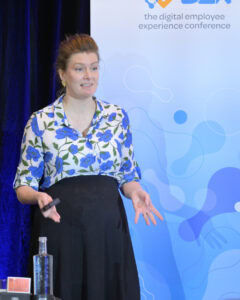
People in hierarchy from Shutterstock
Filed under: Articles, Intranets, Usability
Many intranets are structured around the organisational chart. It is well known that this method of grouping content is difficult for staff — they can’t find information if they don’t know who is responsible for it. However, it often seems too difficult to move from an organisational-based structure to a more intuitive topical structure.
Before moving to a better structure it is necessary to identify why the intranet is currently designed around the organisational chart, and address these issues first.
Teams want a place on the intranet
One of the primary reasons that an intranet becomes structured like the organisational chart is due to each team wanting a place on the intranet. Teams want to be visible in the organisation so other staff are aware of what they do. The team then fill their section with information about what they do and their key documents.
This can result in an intranet that includes a lot of information, but is not much use to readers — especially if their key documents are focused toward the team not the readers.
A solution may be to create an entire section that allows teams to include information about their role, key team members and projects. This provides the exposure that the team needs, and may help them to focus their other content.
Information needed by staff to do their day-to day work should make up the rest of the intranet structure.
Authors need to know ‘where’ to put information
When authors are preparing information for the intranet, they need to know where to store it, and how other staff will access it. The simplest place to put their page is with the other information their team provides.
This is simple for the author, but not useful for other staff. In many cases, staff do not know the organisation structure well enough to locate information in this way.
There are two ways to address this issue:
- A more intuitive topic structure will make it easier for staff to find information. A good topic structure will also be useful for authors, making it easier to determine where to put information.
- Some intranets use two structures. One structure is an intuitive topic structure; the other is an organisational structure. Readers can find information according to topic and authors find their information according to the organisational structure.
Authors focus on the information, not the readers
When authors prepare information for the intranet, they generally focus on the information from their own perspective. When looking at information in this way, it seems logical that everything their team creates should be in one place on the intranet. They may not realise that many topics are covered by more than one team and many teams are responsible for more than one topic.
This issue can be addressed by helping authors to understand how staff approach information when completing day-to-day tasks. This can be done by:
- involving authors and staff in a card sorting exercise
- walking through tasks with authors, approaching them from the staff perspective (see our article Five ways to identify intranet usability issues)
- analysing tasks, breaking them down into sub-tasks and looking at what information people need for the task.
Conclusion
Moving from the organisational chart to a more intuitive topic-based structure can be complex. Understanding the reasons this structure is used can help identify solutions that work better in the long term.





